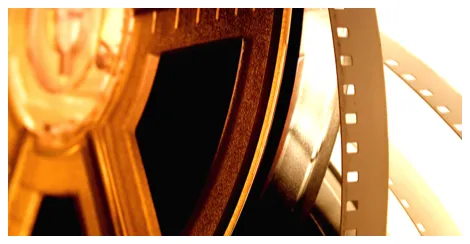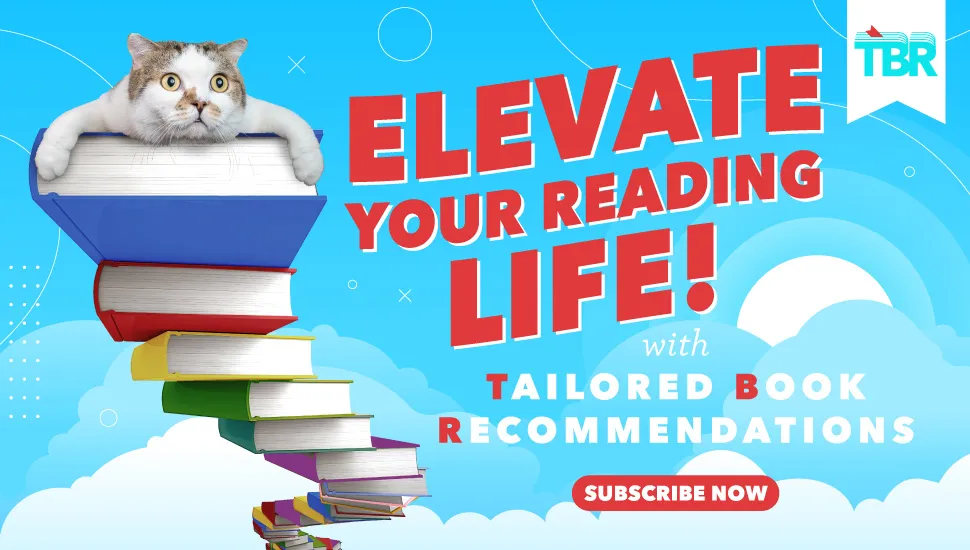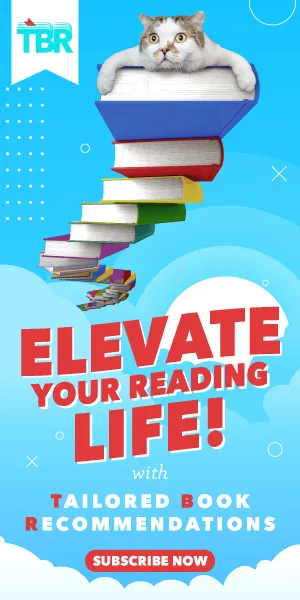
Are Some Books Impossible to Film?
This content contains affiliate links. When you buy through these links, we may earn an affiliate commission.
When I learned that one of my favorite books from my childhood, The Giver by Lois Lowry, would be adapted into a movie, I considered a film adaptation virtually impossible. In books, writers can withhold as much information as they choose or reveal it gradually. Movies have to show certain details that authors might not make apparent until the end of the book. On film, it’s impossible to hide the fact that Jonas sees in black and white, with occasional flashes of red. This eventually became clear to me, albeit in a subtle way, on my first reading as a kid. Jonas can’t describe the color red because he can’t conceptualize it.
 When I eventually saw the 2014 movie adaptation, I loved some of the actors and tried to be open-minded. However, my original impression persisted. The movie has to be in black and white with flashes of color, but this crucial detail is tantamount to a spoiler. In the book, I learned how Jonas’ dystopian society operates at the same time he did.
The movie also exaggerates the conflict between Jonas and the Elders. The Elders are supposed to seem anonymous and almost interchangeable in the book, but the movie makes Meryl Streep’s Chief Elder seem tyrannical. In the novel, Jonas’ struggle is internal: whether to leave the only home he’s ever known.
Generally, movies can brilliantly depict dramatic, external conflicts, while books are better at internal conflicts. CGI can show us the scope of fantasy battles and armies. Many contemporary short stories, on the other hand, focus on interiority: characters’ thoughts, narrative voices, memories, and epiphanies. This can be fascinating to read but uneventful or hard to convey on film.
Another childhood favorite, Mrs. Frisby and the Rats of NIMH, is a fantasy about hyper-intelligent lab rats who learn to read and develop technology. The cartoon adaptation, The Secret of NIMH, adds mystical elements, like magical jewels and amulets. This disappointed me. Yes, the jewels looked flashy, but the book had told me that reading was magical. No other magic was necessary.
Sometimes, movie adaptations have to wait for technology to catch up to writers’ and directors’ imaginations. It’s no coincidence that the live-action Lord of the Rings movies were finally made after CGI had advanced. This was over 20 years after the cartoon adaptation and almost 50 years after the books were first published. Before Warner Bros. made the first Harry Potter movie, I remember reading that J. K. Rowling chose them over other studios, who had wanted to make the movies animated.
I’m not trying to debate the merits of books versus movies. I love both mediums, which have myriad strengths and weaknesses. Some movie and TV adaptations of books brilliantly realize what’s hard to visualize while reading. Some books are simply much more difficult to translate from page to screen. This quote, from an interview with Toni Morrison, explains that she doesn’t want or expect readers to see her characters exactly as she does:
“You don’t know necessarily how tall they are, because I don’t want to force the reader into seeing what I see. It’s like listening to the radio as a kid. I had to help, as a listener, put in all of the details. It said ‘blue,’ and I had to figure out what shade. Or if they said it was one way, I had to see it. It’s a participatory thing.”
I think that this quote can apply to movie adaptations as well as reading. When I watch a movie version of a favorite book, the author and director’s visualizations will differ from my own. That’s part of the creative vision of adapting one medium to another.
For a fascinating take on visualization while reading, click here.
When I eventually saw the 2014 movie adaptation, I loved some of the actors and tried to be open-minded. However, my original impression persisted. The movie has to be in black and white with flashes of color, but this crucial detail is tantamount to a spoiler. In the book, I learned how Jonas’ dystopian society operates at the same time he did.
The movie also exaggerates the conflict between Jonas and the Elders. The Elders are supposed to seem anonymous and almost interchangeable in the book, but the movie makes Meryl Streep’s Chief Elder seem tyrannical. In the novel, Jonas’ struggle is internal: whether to leave the only home he’s ever known.
Generally, movies can brilliantly depict dramatic, external conflicts, while books are better at internal conflicts. CGI can show us the scope of fantasy battles and armies. Many contemporary short stories, on the other hand, focus on interiority: characters’ thoughts, narrative voices, memories, and epiphanies. This can be fascinating to read but uneventful or hard to convey on film.
Another childhood favorite, Mrs. Frisby and the Rats of NIMH, is a fantasy about hyper-intelligent lab rats who learn to read and develop technology. The cartoon adaptation, The Secret of NIMH, adds mystical elements, like magical jewels and amulets. This disappointed me. Yes, the jewels looked flashy, but the book had told me that reading was magical. No other magic was necessary.
Sometimes, movie adaptations have to wait for technology to catch up to writers’ and directors’ imaginations. It’s no coincidence that the live-action Lord of the Rings movies were finally made after CGI had advanced. This was over 20 years after the cartoon adaptation and almost 50 years after the books were first published. Before Warner Bros. made the first Harry Potter movie, I remember reading that J. K. Rowling chose them over other studios, who had wanted to make the movies animated.
I’m not trying to debate the merits of books versus movies. I love both mediums, which have myriad strengths and weaknesses. Some movie and TV adaptations of books brilliantly realize what’s hard to visualize while reading. Some books are simply much more difficult to translate from page to screen. This quote, from an interview with Toni Morrison, explains that she doesn’t want or expect readers to see her characters exactly as she does:
“You don’t know necessarily how tall they are, because I don’t want to force the reader into seeing what I see. It’s like listening to the radio as a kid. I had to help, as a listener, put in all of the details. It said ‘blue,’ and I had to figure out what shade. Or if they said it was one way, I had to see it. It’s a participatory thing.”
I think that this quote can apply to movie adaptations as well as reading. When I watch a movie version of a favorite book, the author and director’s visualizations will differ from my own. That’s part of the creative vision of adapting one medium to another.
For a fascinating take on visualization while reading, click here.
 When I eventually saw the 2014 movie adaptation, I loved some of the actors and tried to be open-minded. However, my original impression persisted. The movie has to be in black and white with flashes of color, but this crucial detail is tantamount to a spoiler. In the book, I learned how Jonas’ dystopian society operates at the same time he did.
The movie also exaggerates the conflict between Jonas and the Elders. The Elders are supposed to seem anonymous and almost interchangeable in the book, but the movie makes Meryl Streep’s Chief Elder seem tyrannical. In the novel, Jonas’ struggle is internal: whether to leave the only home he’s ever known.
Generally, movies can brilliantly depict dramatic, external conflicts, while books are better at internal conflicts. CGI can show us the scope of fantasy battles and armies. Many contemporary short stories, on the other hand, focus on interiority: characters’ thoughts, narrative voices, memories, and epiphanies. This can be fascinating to read but uneventful or hard to convey on film.
Another childhood favorite, Mrs. Frisby and the Rats of NIMH, is a fantasy about hyper-intelligent lab rats who learn to read and develop technology. The cartoon adaptation, The Secret of NIMH, adds mystical elements, like magical jewels and amulets. This disappointed me. Yes, the jewels looked flashy, but the book had told me that reading was magical. No other magic was necessary.
Sometimes, movie adaptations have to wait for technology to catch up to writers’ and directors’ imaginations. It’s no coincidence that the live-action Lord of the Rings movies were finally made after CGI had advanced. This was over 20 years after the cartoon adaptation and almost 50 years after the books were first published. Before Warner Bros. made the first Harry Potter movie, I remember reading that J. K. Rowling chose them over other studios, who had wanted to make the movies animated.
I’m not trying to debate the merits of books versus movies. I love both mediums, which have myriad strengths and weaknesses. Some movie and TV adaptations of books brilliantly realize what’s hard to visualize while reading. Some books are simply much more difficult to translate from page to screen. This quote, from an interview with Toni Morrison, explains that she doesn’t want or expect readers to see her characters exactly as she does:
“You don’t know necessarily how tall they are, because I don’t want to force the reader into seeing what I see. It’s like listening to the radio as a kid. I had to help, as a listener, put in all of the details. It said ‘blue,’ and I had to figure out what shade. Or if they said it was one way, I had to see it. It’s a participatory thing.”
I think that this quote can apply to movie adaptations as well as reading. When I watch a movie version of a favorite book, the author and director’s visualizations will differ from my own. That’s part of the creative vision of adapting one medium to another.
For a fascinating take on visualization while reading, click here.
When I eventually saw the 2014 movie adaptation, I loved some of the actors and tried to be open-minded. However, my original impression persisted. The movie has to be in black and white with flashes of color, but this crucial detail is tantamount to a spoiler. In the book, I learned how Jonas’ dystopian society operates at the same time he did.
The movie also exaggerates the conflict between Jonas and the Elders. The Elders are supposed to seem anonymous and almost interchangeable in the book, but the movie makes Meryl Streep’s Chief Elder seem tyrannical. In the novel, Jonas’ struggle is internal: whether to leave the only home he’s ever known.
Generally, movies can brilliantly depict dramatic, external conflicts, while books are better at internal conflicts. CGI can show us the scope of fantasy battles and armies. Many contemporary short stories, on the other hand, focus on interiority: characters’ thoughts, narrative voices, memories, and epiphanies. This can be fascinating to read but uneventful or hard to convey on film.
Another childhood favorite, Mrs. Frisby and the Rats of NIMH, is a fantasy about hyper-intelligent lab rats who learn to read and develop technology. The cartoon adaptation, The Secret of NIMH, adds mystical elements, like magical jewels and amulets. This disappointed me. Yes, the jewels looked flashy, but the book had told me that reading was magical. No other magic was necessary.
Sometimes, movie adaptations have to wait for technology to catch up to writers’ and directors’ imaginations. It’s no coincidence that the live-action Lord of the Rings movies were finally made after CGI had advanced. This was over 20 years after the cartoon adaptation and almost 50 years after the books were first published. Before Warner Bros. made the first Harry Potter movie, I remember reading that J. K. Rowling chose them over other studios, who had wanted to make the movies animated.
I’m not trying to debate the merits of books versus movies. I love both mediums, which have myriad strengths and weaknesses. Some movie and TV adaptations of books brilliantly realize what’s hard to visualize while reading. Some books are simply much more difficult to translate from page to screen. This quote, from an interview with Toni Morrison, explains that she doesn’t want or expect readers to see her characters exactly as she does:
“You don’t know necessarily how tall they are, because I don’t want to force the reader into seeing what I see. It’s like listening to the radio as a kid. I had to help, as a listener, put in all of the details. It said ‘blue,’ and I had to figure out what shade. Or if they said it was one way, I had to see it. It’s a participatory thing.”
I think that this quote can apply to movie adaptations as well as reading. When I watch a movie version of a favorite book, the author and director’s visualizations will differ from my own. That’s part of the creative vision of adapting one medium to another.
For a fascinating take on visualization while reading, click here.















